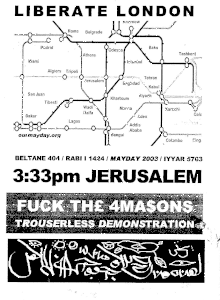
Psychogeography is the exploration of urban environments that emphasizes interpersonal connections to places and arbitrary routes. It was developed by members of the Letterist International and Situationist International, which were revolutionary groups influenced by Marxist and anarchist theory as well as the attitudes and methods of Dadaists and Surrealists.[1][2][3]
In 1955, Guy Debord defined psychogeography as "the study of the precise laws and specific effects of the geographical environment, consciously organized or not, on the emotions and behavior of individuals."[4] One of the key tactics for exploring psychogeography is the loosely defined urban walking practice known as the dérive. As a practice and theory, psychogeography has influenced a broad set of cultural actors, including artists, activists and academics.[2][3][5]
- ^ Caves, R. W. (2004). Encyclopedia of the City. Routledge. p. 546. ISBN 9780415252256.
- ^ a b Marcus, Greil (2014-10-09). Lipstick Traces: A Secret History of the Twentieth Century. Faber & Faber. ISBN 978-0-571-26120-8.
- ^ a b Plant, Sadie (2002-01-22). The Most Radical Gesture: The Situationist International in a Postmodern Age. Routledge. ISBN 978-1-134-92530-8.
- ^ "Introduction to a Critique of Urban Geography". The Situationist International Text Library.
- ^ Richardson, Tina (2015-07-07). Walking Inside Out: Contemporary British Psychogeography. Rowman & Littlefield. ISBN 978-1-78348-087-6.